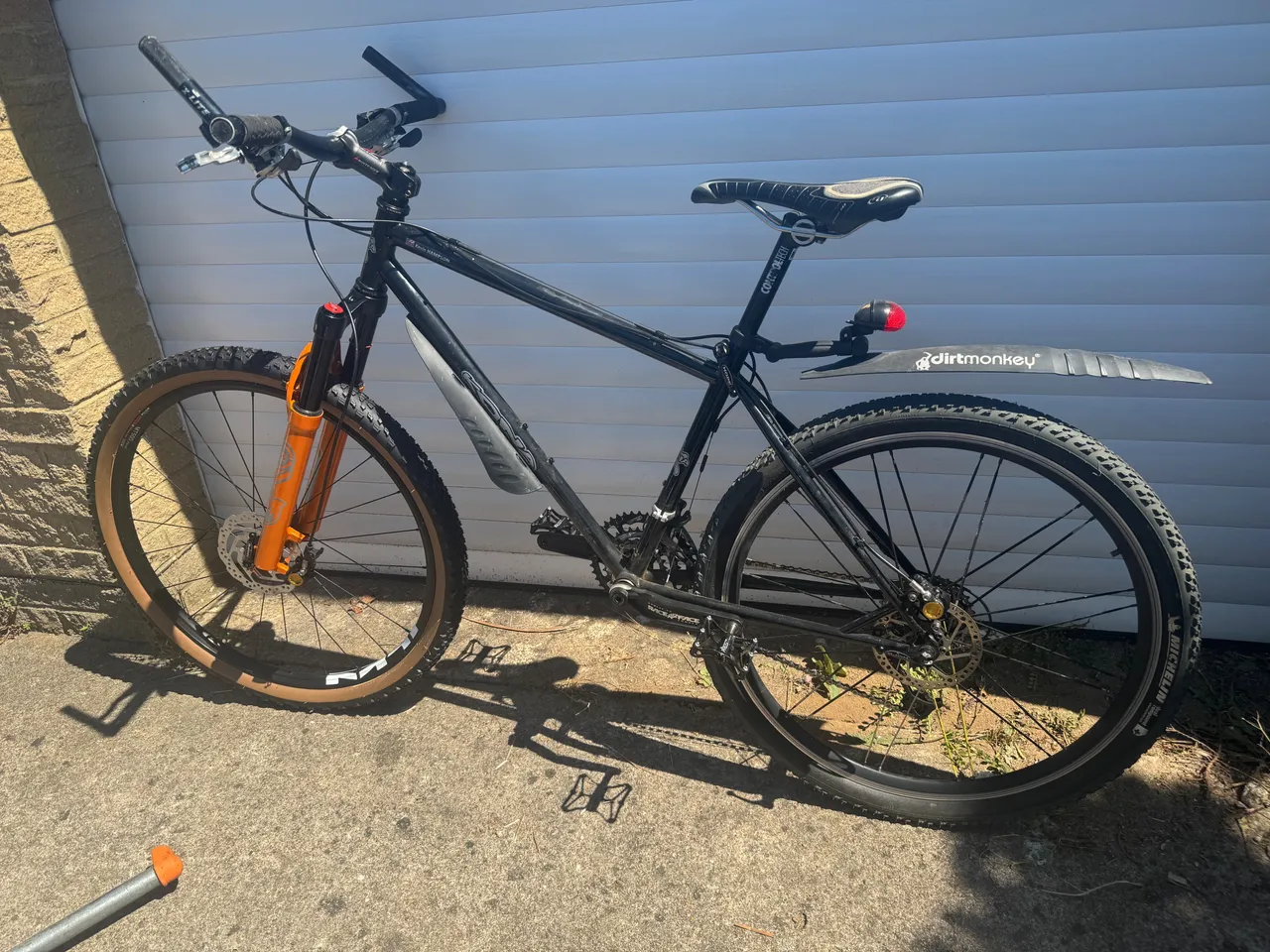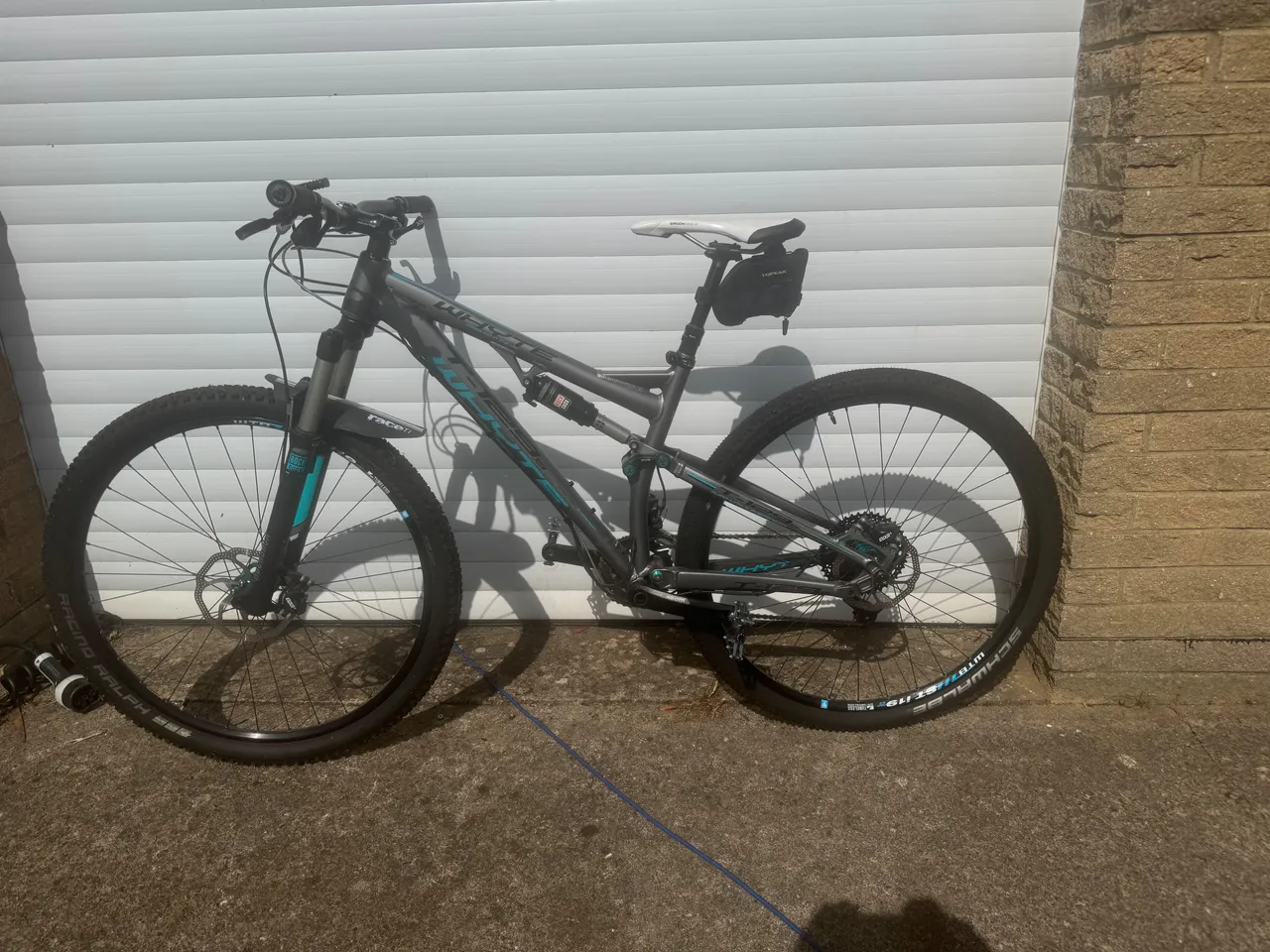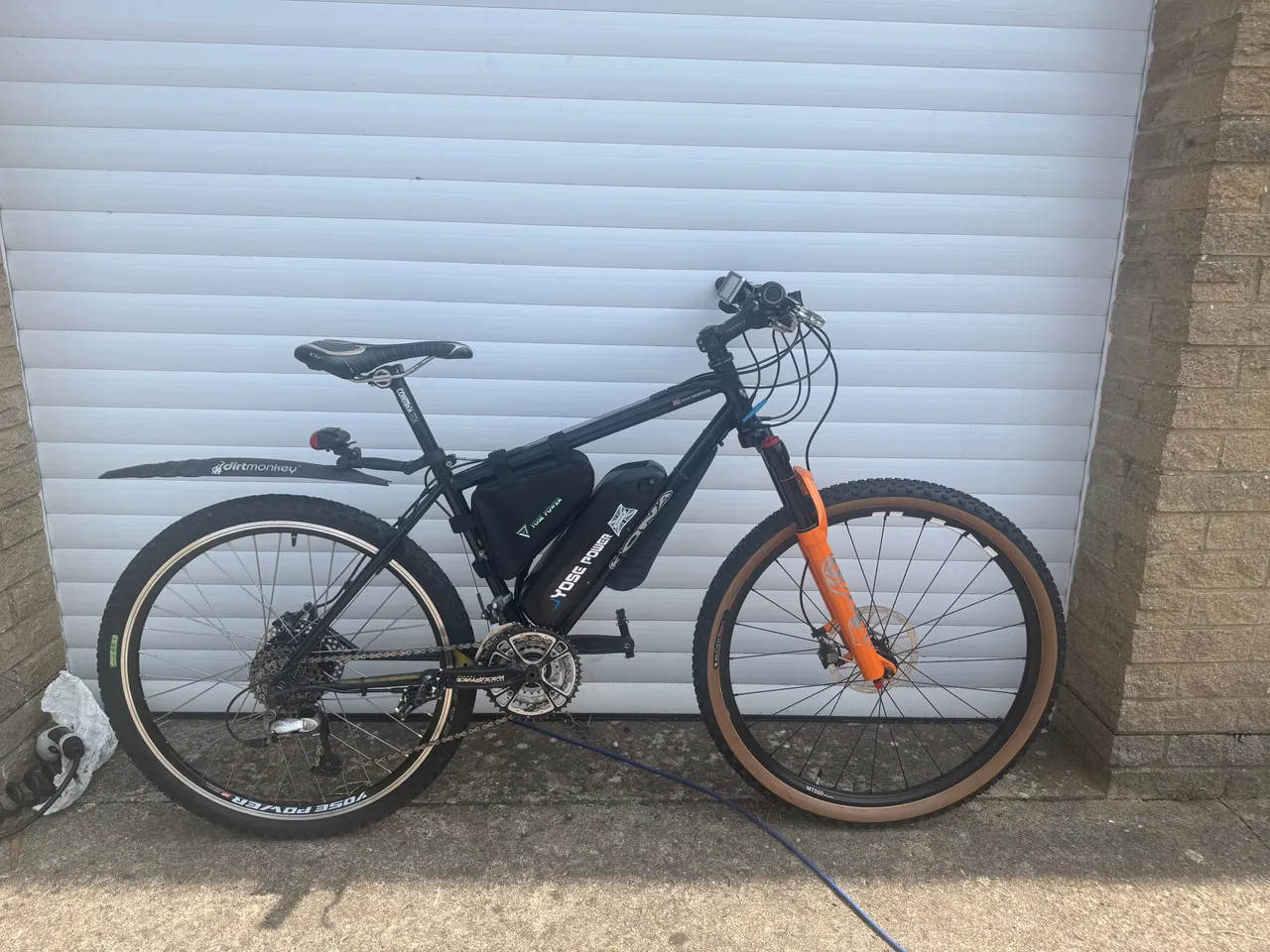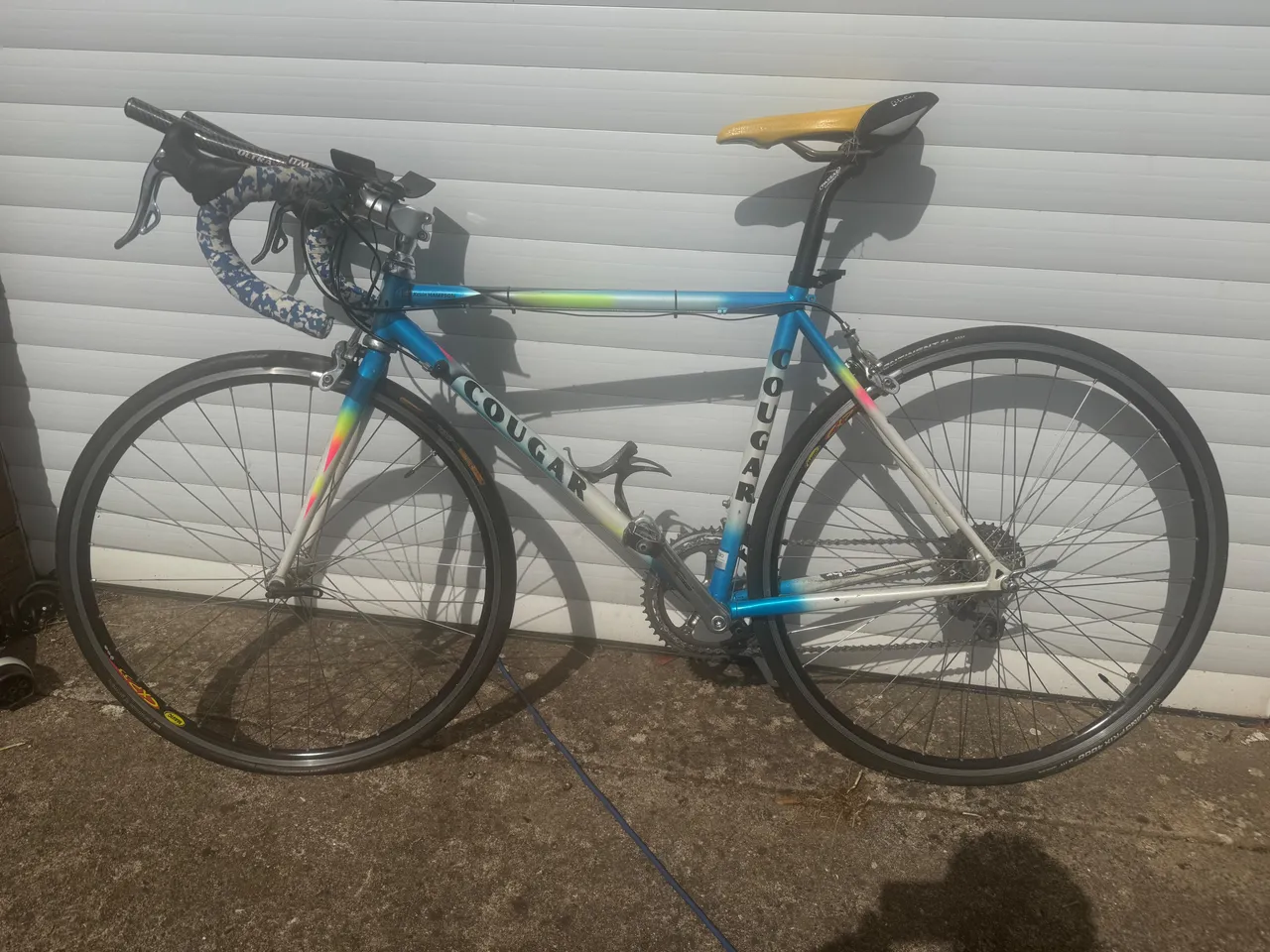While chatting with @friendlymoose the other day about my “baby Mullet” bike project he mentioned that he hadn't come across cycles with different sized wheels but that got me thinking. I suppose the original mullet bike was the penny farthing back in the 1870 and 80 but that was a bit extreme with a front wheel of around 5ft usually fitted with solid rubber tires. There are still some clubs that ride them bloody loony’s. Oddly enough there are a couple of company’s that make a version now to my knowledge two company’s QU-AX and Ammaco make them but with a much more modest 28 to 36” wheel and a pneumatic tire. Ok history lesson over.
Modern mullet bikes kicked off in the early 2000 and while now 27.5” rear 29” front is the usual configuration, the first commercially available mullet mountain bike, was Specialised’s Big Hit, released in 2004 with a 26-inch front wheel and a 24-inch rear wheel both common wheel sizes at the time, it didn’t sell well now there’s a surprise.
So a few mullet bikes pros and cons.
Better control and stability the larger front wheel rolls over bumps and tracks better on rough terrain.
More efficiency and speed slacker geometry because of the larger front wheel reduces rolling resistance and descending is faster.
Better manoeuvrability the smaller rear wheel increases manoeuvrability giving tighter turns on technical trail.
Easier faster climbing once again having a larger front wheel helps rolling over objects so climbs are more efficient and faster.
Poppy playful handling this one is a bit subjective but because the slacker geometry and better control riders tend to have the confidence to throw the bike around a bit more making the handling seem even better.
Nothing is ever free so what’s bad about mullet bikes.
More spares if you carry tires and tubes in your spares when your out for rides you have 2 different wheel sizes to contend with.
Rear end chatter the smaller rear wheel bounces more over bumps can be bad on hard tail mullet bikes.
Steeper seat tube angle shifts weight balance rearward giving a lighter front end feeling.
Unbalanced feeling different size wheels change the weight distribution on the bike.
Compromised Geometry converted mullet bikes ( yes like mine )have some odd not as designed geometry slack head angles, steeper seat post, high front end.
Some people just don’t like them the playful handling and slightly odd look puts some people off band they prefer a more stable predictable handling bike.
My setup, well Hivers I called it a Baby Mullet as it’s small frame early 90s race Kona Explosif 26” rear and 27.5” front it should work ok given my size I’m only 5ft3.

I find my small frame Whyte ?? With 29” wheels a bit on the high side I can ride it ok but it feels high when you’re in the saddle. It’s about 150mm higher in the saddle.

The Kona is now an e-bike another Hive post and rides real well especially over bumps with the set up the geometry is quite slack and forgiving on the road and light local trails I’ll be riding. Certainly not as twitchy and tight as when I raced the Kona with narrow bars and Pace race forks.

The other way round back in the 70s-80s there was a fad for low profile time trial bikes these were usually a 700c rear and 650c front dropping the front end gave you a more aggressive aero stance on the road and they were made popular by racers such as Greg LeMond and Bert Oosterbosch. My lo-pro bike is a Cougar frame from the mid 80s with Campagnolo components I originally raced it with race tube tires but I used to get flats every couple of weeks so I changed to slightly heavier clincher tires which killed the handling.

So there you have it Hivers a bit more waffle and a few less photos than my usual post but I hope you found it informative.